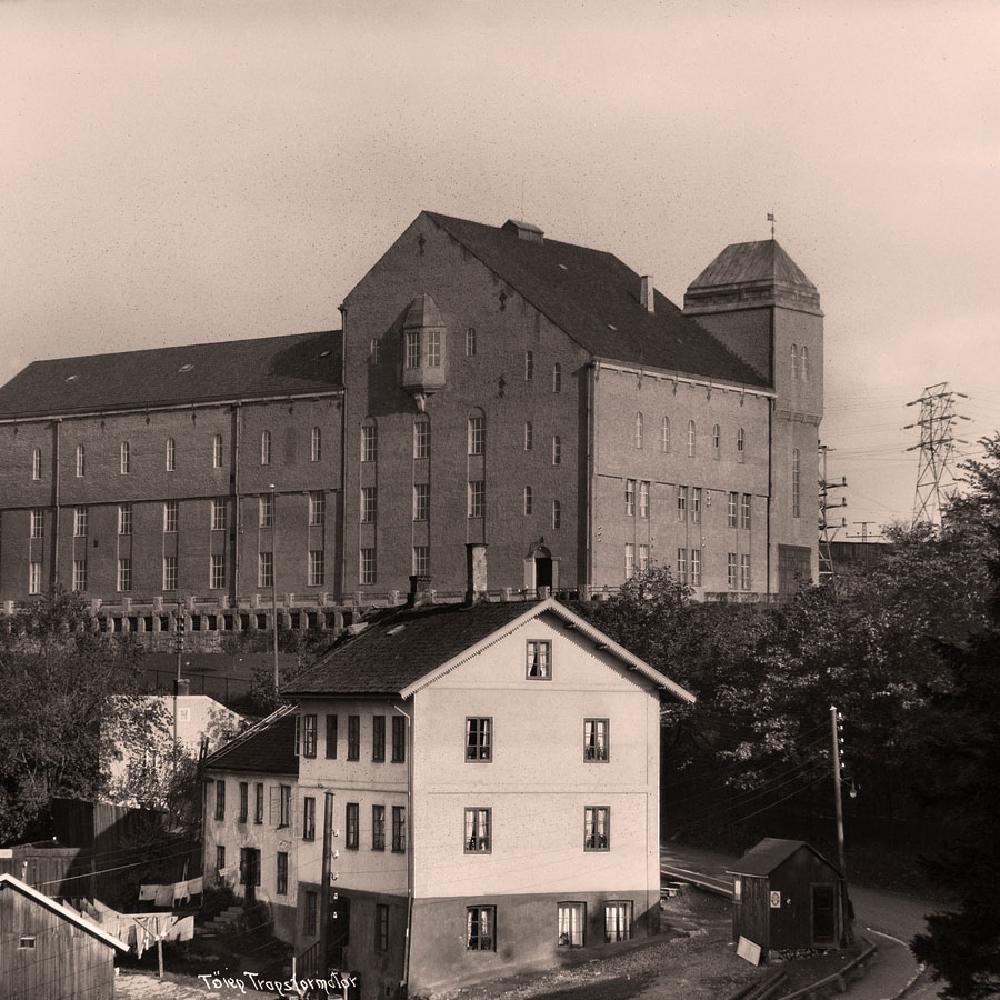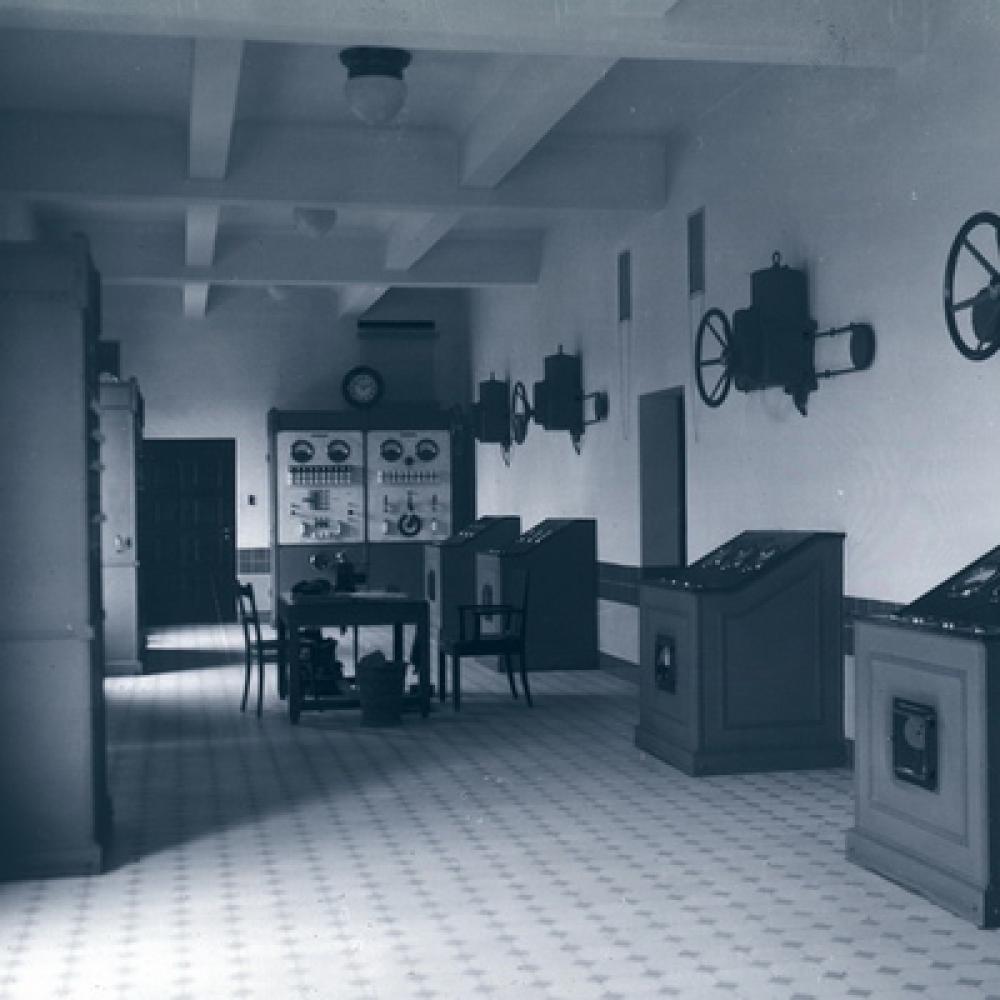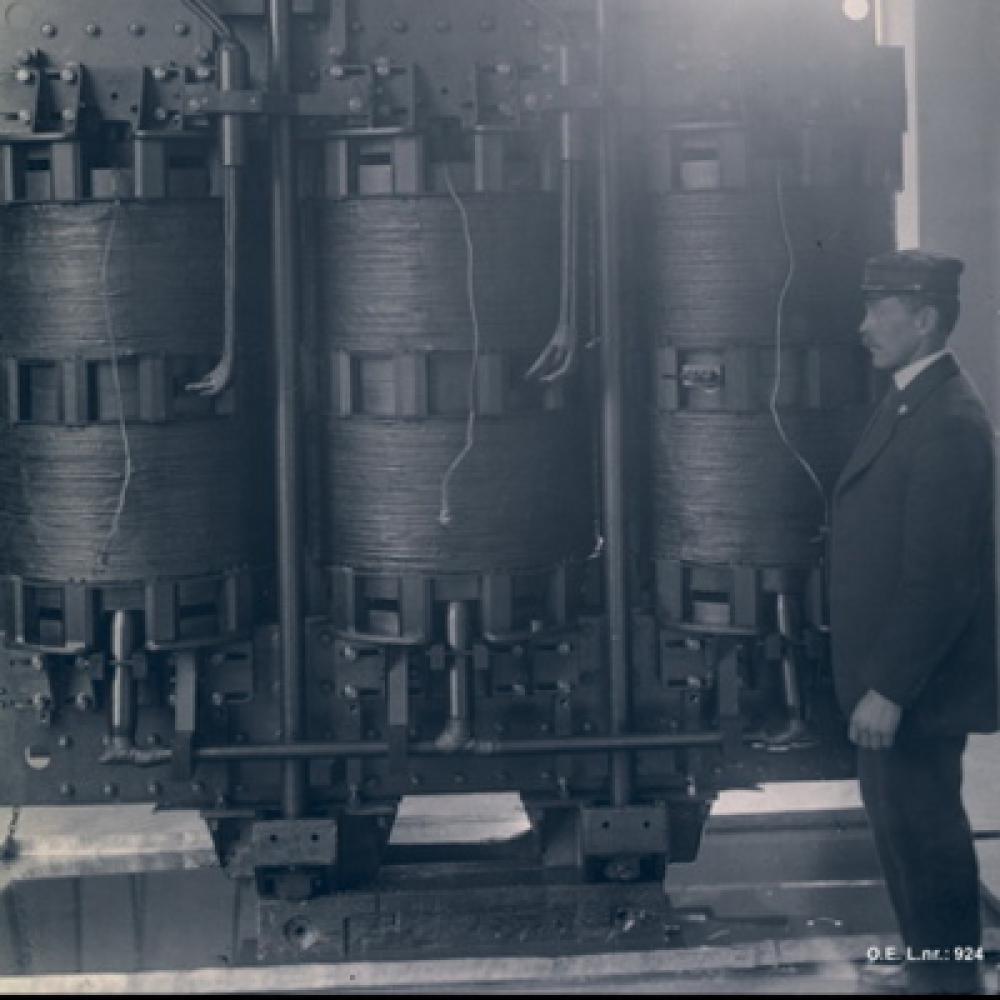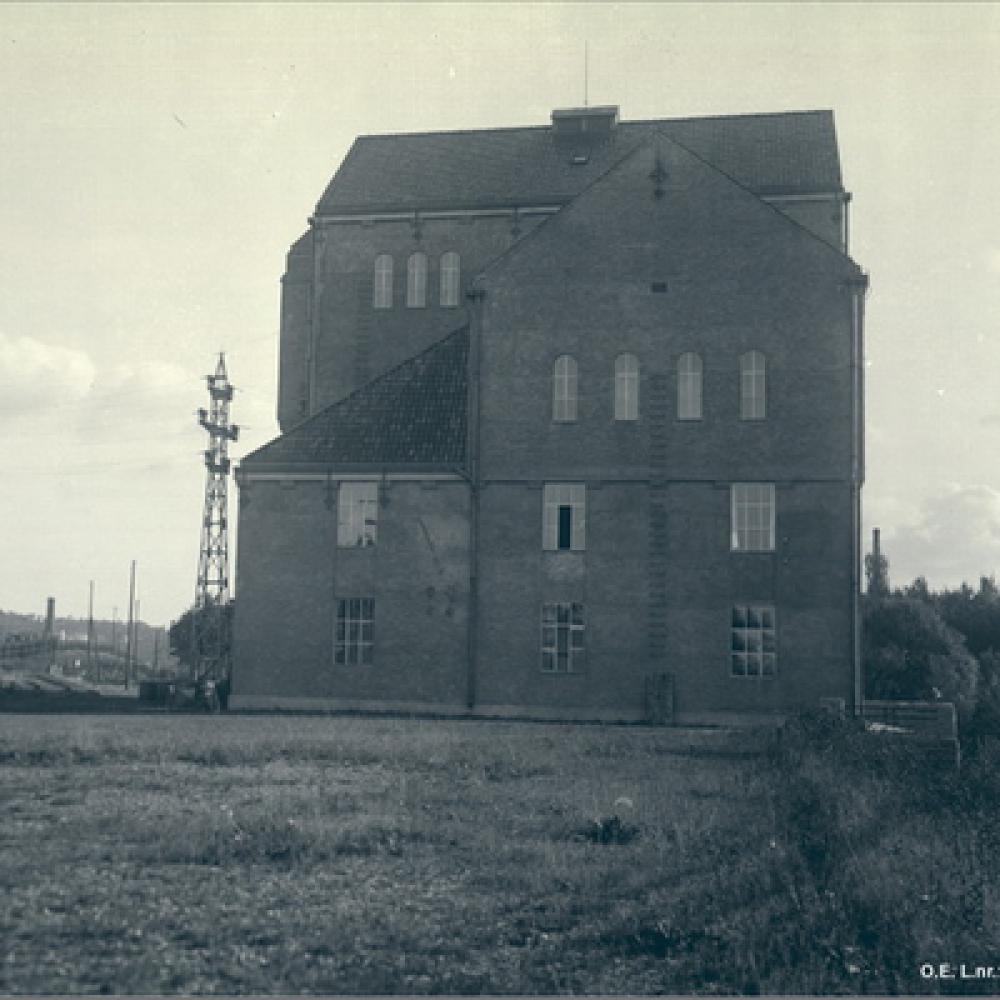
Architecture
The substation building has its own history. The building is Oslo’s oldest transformer station and is also one of the oldest in the country. It is a building work in the neoclassical industrial style from 1915, designed by architect Thorvald Astrup for Akers Electricity Works. Trafos’s property, on the edge of Lake Øya, facing the fjord and the city, was at the time chosen as the first alternative location when the castle in Oslo was to be built. The Tøyen transformer station is listed on the Byantikvarens Gule list as worthy of preservation. The building is unique industrial architecture, and the facades facing the road are protected.

Operation ceases
In the 1970s, a new transformer station was built next to the old one on Tøyen, and gradually the old one was evacuated. In its place, there was a hollow shell, dilapidated and marked by hard use.

Studio commitee
The Young Artists Society, UKS, was established at the beginning of the 1970s to create its own studio committee to meet the increasingly strong demand for new studios for artists in Oslo. The committee, led by Kari Rolfsen, made a significant effort to get the municipality to take responsibility for helping to alleviate the studio shortage for artists in Oslo. It had experience with many places in Oslo, including the old transformer station on Tøyen. Through negotiations with the Oslo municipality, it became clear that the municipality, which owned the former Oslo Lighting Works, could make the building available to the artists against the condition that they themselves would cover all renovation and interior work, with a rental exemption for the investment. This was advantageous for the artists. The building had a basement and a relatively inexpensive interior, well suited for studios and individual efforts.

Established
The City Council in Oslo decided in the fall of 1972 to establish TRAFO Tøyen cultural house as studios for visual artists and spaces for the Oslo Theater Center. The official opening of what was then called Tøyen cultural house, TRAFO, took place on September 2, 1975. From the start, there were 10 sculpture studios, 6 painting studios, and a common workshop for 4 textile artists. For sculptors, where an increase in commissions in the 70s and 80s made monumental studios in demand, 12 of the studios with individual access from the hillside were a good opportunity to work both indoors and outdoors. This also facilitated easier transport of heavier materials.

Construction Phase
Oslo kommune fikk leie tidligere Tøyen trafostasjon gratis av Oslo lysverker i 1972. Den gang var Oslo lysverker 100 % eid av Oslo kommune. Lysverket ble privatisert på slutten av 80-tallet. Oslo kommune ble da hovedaksjonær i Oslo Energi. Ved denne politiske handling “glemte” politikerne å videreføre kunstnernes avtale med Oslo kommune. Oslo Energi ble sent på 90-tallet solgt videre til Hafslund, fortsatt med Oslo kommune som største aksjonær.

Rehabilitering
Oslo municipality rented the former Tøyen transformer station for free from Oslo Lighting Works in 1972. At that time, Oslo Lighting Works was 100% owned by Oslo municipality. The lighting company was privatized in the late 1980s. Oslo municipality then became the main shareholder in Oslo Energy. Through this political action, the politicians “forgot” to continue the artists’ agreement with Oslo municipality. Oslo Energy was sold in the 1990s to Hafslund, still with Oslo municipality as the largest shareholder.